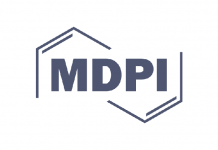
Largest OA publisher calls for cOAlition S policy to be evidence-based and focus on stimulating ‘demand’ as well as ‘supply’
Springer Nature is strongly supportive of Plan S’s goal to accelerate the adoption of Open Access (OA). Today it calls on cOAlition S participants to put evidencing and promoting the benefits of OA at the heart of their strategy as one of six recommendations it believes funding bodies worldwide need to adopt in order for full open access to become a reality. The full submission can be read here.
Research undertaken by Springer Nature shows that while there are proven benefits in publishing OA, including increased citations, increased downloads and wider impact[1], authors are still not routinely choosing to publish OA for often valid reasons[2]. Springer Nature has demonstrated that when innovative transformative deals are in place, a wide range of journals available from which authors can choose and the benefits of OA strongly promoted, then accelerated OA transition is not only possible but very successful. In the four most mature countries which have Read and Publish deals with Springer Nature, OA penetration rates have reached 73-90% in only three years[3].
As the world’s largest OA publisher, and with knowledge gained from being a first mover in this field, Springer Nature is very aware of the challenges that need to be overcome on the demand and supply side – namely the lack of global cooperation on funder policies, academic disciplines lacking OA resources, funding flows in flux, and crucially an author community that does not yet view publishing OA as a priority. Therefore, Springer Nature is calling on cOAlition S funders to:
- Commit to undertake research to demonstrate the benefits of OA and the promotion of it to increase author and other funder take up
- Commit to make transformative deals, such as Publish and Read deals, a key part of Plan S given their proven ability to drive growth in OA and within these deals and to remove its requirement for publishers to commit to ‘flip’ hybrid journals to OA in the near future
- Rethink more broadly its opposition to hybrid journals at a time when many academic disciplines and many geographic regions are not yet fully supportive of Gold OA
- Remove the requirement to provide APC waivers for middle income countries such as China which is the largest publisher of academic research in the world and the second largest investor in R&D
- Recognise that highly selective journals and those with significant levels of non-primary research content need to be treated differently
- Support platforms providing early access to primary research
Steven Inchcoombe, Chief Publishing Officer at Springer Nature, said:
“The primary goal of Plan S is to drive the transition to OA and specifically to substantially increase the number of OA research articles published each year as quickly as possible. For this to succeed and crucially to be sustainable, we need to also stimulate demand from authors and funders and this means much stronger promotion to them of the benefits of OA.
“At Springer Nature we have the journals – over 600 fully gold OA journals and 1,900 hybrid journals all with rapidly growing OA components. What we don’t yet have is enough demand from authors across multiple disciplines and across multiple geographies and enough funders willing to support immediate OA publishing. Until that time comes, as a global publisher publishing across all the sciences, social sciences and humanities, we need to be able to continue to meet the publishing needs of all authors, whoever their funder or employer is. This is why the ability to offer an immediate open access publishing option on our widest portfolio of journals is so important, sustaining OA publishing across a total of 2,500 journals today and more in the future.
“We are calling on cOAlition S and the wider community to get behind a proven approach which will help demonstrate the benefits of gold OA to both funders and authors across disciplines and across geographies and significantly increase OA take up rates. We will continue to play our part in extoling the virtues of OA using evidence-based studies and call on the wider community to do the same in order to help the pendulum swing faster.”
Steven Inchcoombe’s Springboard blog can be read at https://www.springernature.com/gp/advancing-discovery/blog/blogposts/need-to-focus-on-demand-as-well-as-supply–making-plan-s-work-fo/16462762
Springer Nature’s six recommendations in its submission to cOAlition S are:
1. All parties to work together towards a global level playing field by increasing the evidence-base around the benefits of Open Access and promoting them to the research community;
2. cOAlition S funders to make transformative deals, such as Publish and Read deals, a key part of Plan S given their proven ability to drive growth in OA;
3. cOAlition S funders to allow ‘hybrid’ and ‘sister’ journals to be Plan S compliant given their role in meeting different geographic, funder and disciplinary needs;
4. All parties to work together on a sustainable solution for highly selective journals and non-primary research content in journals given their different funding and cost characteristics;
5. Plan S principles to utilise market forces and competition to ensure ‘reasonable’ APC levels or, if necessary, to take into account individual characteristics of journals and their associated publishing and workflow costs when ensuring ‘reasonable’ APC levels;
6. Plan S to support innovative access platforms being built to provide early access to primary research.
[1] See notes to editors






















